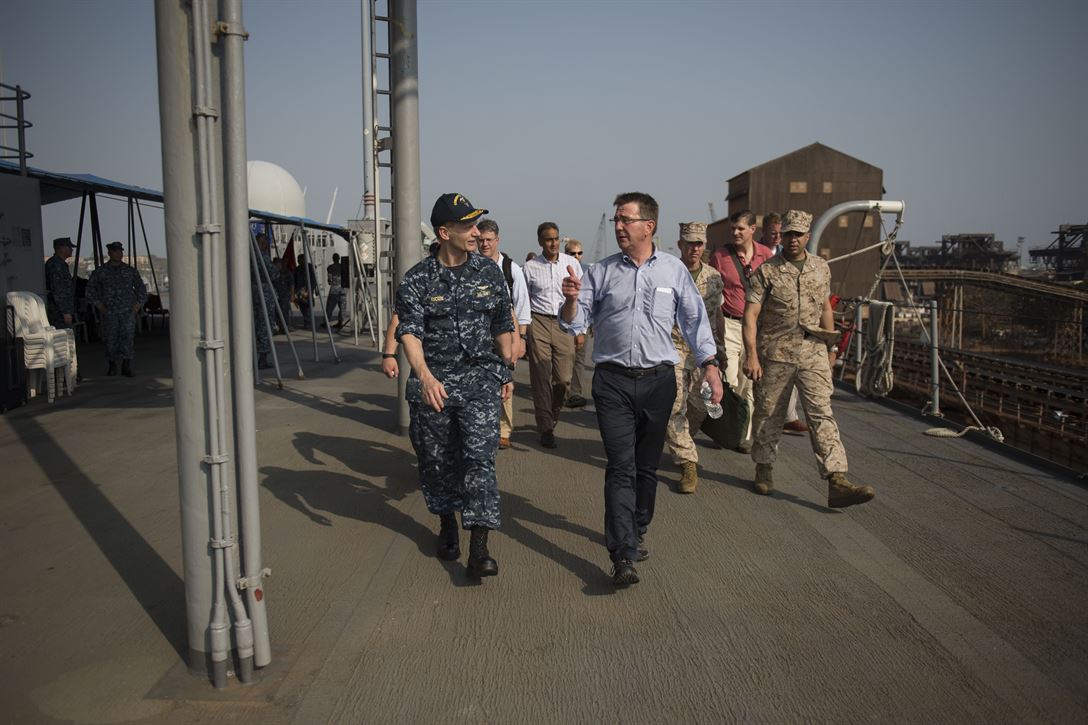 Senior Master Sgt. Adrian Cadiz / US DOD
Senior Master Sgt. Adrian Cadiz / US DOD
The Indian Ocean Region is Key to U.S.-India Relations
Since India’s economic opening in the late 1990s, U.S.-India relations have transformed dramatically from a relationship of estrangement and limited engagement into a partnership that fosters cooperation ranging from security to economic and environmental objectives. The last two U.S. administrations built upon this blossoming relationship, with the last administration setting the course for interacting with the world’s largest democracy. Through frequent high-level meetings, defense coordination, and economic engagement, the policies of the last few years chartered a new era of U.S.-India relations.
As the U.S. settles into a new administration, Washington must reiterate and build upon this relationship with New Delhi. In particular, the new Administration must set policy where both states’ security interest meet: in the India Ocean Region (IOR). The current U.S. administration has not yet established its vision for the IOR, or for the broader U.S.-India relationship. (To date, an ambassador to India has not been nominated, and ministerial-level engagement has been modest.) The lack of clarity on the U.S. position weakens the stability in the IOR. For example, Germany, claiming U.S. ambiguity as a motivating factor, named the IOR “an underrated theatre” in which competition is growing, and envisioned Germany taking a larger role in an Indian Ocean without a prominent U.S. presence.
Coordinating with Indian government in the IOR would be a step in the right direction for the current administration, as it is an area strategic to global trade and energy and that houses major sea lines of communication (SLOCs). The Indian Ocean connects the Strait of Hormuz and the Strait of Malacca – two key naval choke points through which 32.2 million barrels of crude oil and petroleum are transported every day. The IOR is also home to 30% of global trade, is rich with energy reserves, and possesses major fish stocks.
Chinese naval projection in the IOR is of particular concern to India, the de facto power in the ocean that inherited its name, and to the U.S., who has already countered China’s growing influence naval posture in the South China Sea. As China continues to develop ports in friendly littoral states, following its “String of Pearls” tactic, and modernizes its navy, India’s own navy must be able to measure up. A fortified Indian navy would help to counterbalance the string of China-friendly states positioned at major chokepoints in the IOR. China’s increasingly assertive naval stance in the IOR does not seem to be lessening any time soon, and may be fortified by softer means of seeking influence. China continues to advance its own position and access in the region through its highly funded One Belt, One Road strategy, which seeks to reinvigorate old trade routes with Beijing at the center of the trade.
Securing the freedom of passage in the IOR should be a priority for both the U.S. and India, especially in light of China’s growing presence in the region. A well-balanced and active agenda in the IOR falls in line with the current administration’s focus on American economic and security interests. To begin formulating a policy in the IOR and toward India, the U.S. should consider the following:
-Seek conclusion of two of three “defense foundation agreements” that the U.S. has been urging India to sign for over a decade. One of these agreements was signed in 2016. These logistic agreements would allow for sharing of military facilities and would increase intelligence sharing between the two nations.
-Expedite defense technology transfers to India and move forward with export deals that have been on hold due to concerns about sharing sensitive technology with India.
-Engage in more frequent ministerial-level meetings with the Indian government. A flourishing of relations occurred under former Defense Secretary Ash Carter, who held several meetings with Indian Defense Minister Manohar Parrikar and prioritized the U.S.-Indian defense relationship. Better quality dialogues will go a long way in managing the clashes that will arise between Washington and New Delhi.
A division of responsibility is needed in the IOR to maintain security and safeguard assets in the region. U.S. support of India’s natural leadership in the Indian Ocean would begin to counterbalance growing tensions. Further, deepened dialogue with the Indian administration would be a good start in Washington’s policy toward New Delhi and would demonstrate commitment the United States’ most prominent partner in the IOR.





